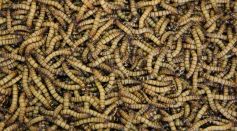ENVIRONMENT & CLIMATE

MIT Experts Developed Fully-Detailed Atlas of Oxygen-Deficient Zones in Earth's Oceans

Fish Can Count? Archerfish Shows Promising Ability to Identify Numbers by Spitting on Computer Screens

Stomach-Turning Animals: 5 of the Biggest Gross-Out Creatures in Science in 2021

Origin of Mysterious Black Glassy Rocks in Atacama Desert Found Through Clues Not From Earth

New Camera- And AI-Based Technology Can Make Wind Turbines Recognize Birds to Pause in Their Flight Path

Humble Little Legless Maggots Dubbed Superhero Insect for Helping Humans Solve Murders, Cleaning Chronic Wounds

Mass Migration During Bronze Age Found Responsible for Replacing Half of Great Britain's Ancestry; France Tops Genetic Evidence of Migrants 3,000 Years Ago

Large Hole Created in the Ozone Layer More Massive Than Antarctica Finally Set to Close This Week

Real-Life Jurassic Park Possible? Experts Say Dinosaurs Can Be Recreated From Their DNA

Iridescent Shimmer of Peacocks and Hummingbirds Has Complex Nanostructures At Play, According to Scientists

Black Tigers: Scientists Uncover the Secrets Behind the Genetic Mutants' Unique Stripes

Arctic Blue Christmas: Light Show Found on Snows in the White Sea Discovered as Effect of These Organisms

Brutal Blood Eagle Ritual from Viking Legends Is Anatomically Possible, Result to Immediate Death

326-Million-Year-Old Car-Sized Millipede Is The World's Largest Arthropod, Study Says
Most Popular

Why Stars Twinkle: Flickering Explained by Atmospheric Turbulence and Light Distortion

The Role of Materials Science in Engineering: How Modern Engineering Materials Drive Innovation

Climate Adaptation Strategies Explained: How Societies Respond to Climate Change

Tornadoes vs. Waterspouts vs. Dust Devils: Key Differences and Vortex Types Explained





